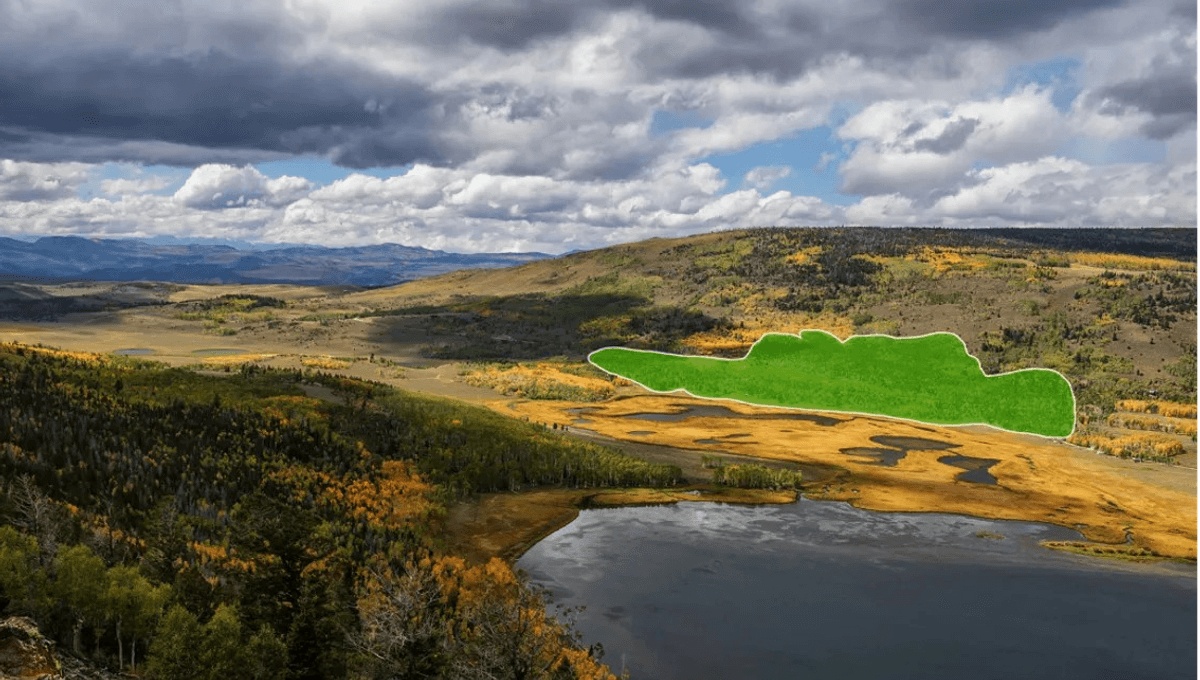
A massive blob lives in Utah, and its name is Pando, which literally means “I spread”. The sprawling lump of quaking aspen (Populus tremuloides) has lived up to its name in spreading across 42.6 hectares (105.3 acres) in Fishlake National Forest with a network of 47,000 stems that were created through asexual reproduction, essentially making Pando a giant tangle of clones. That means it’s technically a single tree, one of the largest organisms on Earth, and we now know it’s one of the oldest, too.
A preprint looked at Pando’s genetic data and concluded that its age ranges between 16,000 and 80,000 years old. While clones are exact copies of each other, they can still independently develop different genetic mutations as they divide, so the team was also excited to see what its genetic variation could reveal about the secret to living a long and massive life.
Pando’s sexless life is the result of being triploid, which means it has three copies of each chromosome in its cells instead of two. Sexual reproduction off the cards, Pando instead clones itself, but it may be a perk for longevity as the researchers say triploid could mean “bigger cells, bigger organisms, better fitness” – good news for something that’s slowly being eaten by deer.
From one seedling to tens of thousands of iterations, Pando has put in quite the shift and the scientists were curious to see what changes have unfolded in its many stems. Curiously, this kind of genetic variation in a clonal animal is something that nobody had really studied in Pando before.
“It’s kind of shocking to me that there hasn’t been a lot of genetic interest in Pando already, given how cool it is,” said study co-author William Ratcliff, who is an evolutionary biologist at the Georgia Institute of Technology in Atlanta, in a statement. “I would love to make a call for people to work on these kinds of organisms.”
Dead set on amending that, they collected root, bark, leaf, and branch samples from Pando’s many clones for DNA analysis and genome sequencing. They also did the same for some unrelated quaking aspens so they could compare and look for variants that were unique to Pando, and identified 4,000 genetic variants that revealed a strange relationship between clone proximity and mutations.
“You would expect that the trees that are spatially close are also closer genetically,” said co-author Rozenn Pineau, who is a plant evolutionary geneticist at the University of Chicago in Illinois. “But this is not exactly what we find. We found a spatial signal, but that is much weaker than what we expected.”
Clone stems that were 1-15 meters (3.3-49.2 feet) apart had a stronger trend of sharing mutations, but beyond that proximity, had a weak influence on similarities in genetic variation. Across its 42.6-hectare bulk, it seems like Pando is a mosaic of mutations that presents as a “well-mixed pot of genetic information,” rather than mutations being clustered in close groups.
The team was also able to use Pando’s genetic data to estimate its age using a theoretical model that plots evolutionary lineage, revealing an estimate of 16,000 to 80,000 years. It places Pando among the oldest living organisms on Earth today, and “makes the Roman Empire seem like just a young, recent thing,” said Ratcliff.
The preprint is hosted on bioRxiv.
A previous version of this article was first published in 2024.
Source Link: An Enormous "Blob" In Utah Is Up To 80,000 Years Old And Among Earth's Oldest Organisms